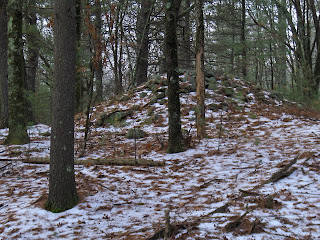More Nolumbeka Project Announcements:
Saturday, January 30, 10:30 – 11:30 a.m. “10,000 Years at the Falls”presented by the Nolumbeka Project,
Greenfield Savings Bank, 282 Avenue A, Turners Falls, Ma 01376. Joe Graveline and David Brule of the Nolumbeka Project will lead a presentation and discussion of tribal presence at the falls of Peskeompskut (Turners Falls) over the past ten thousand years. Included will be a recounting of the latest research on King Philip’s War and on the May 19, 1676 massacre that ended the millennia-long era of the peace village at the falls. Local historians and interested public are welcomed and encouraged to attend. Light refreshments courtesy of Greenfield Savings Bank.
Saturday, February 6, 2016 - 3:00 PM - Greenfield, MA (from Jonathan Mark, flybynews.com@gmail.com)
Leonard Peltier - 40 years Incarcerated - Clemency Event and Film at Green Fields Market - community room Film - Incident at Oglala is a 1992 documentary by Michael Apted, narrated by Robert Redford. The film documents the deaths of twoFederal Bureau of Investigation agents, Jack R. Coler and Ronald A. Williams, on the Pine Ridge Indian Reservation in the summer of 1975. Peltier was fraudulently arrested in Canada by the FBI using a false witness on February 6, 1976. Is not 40 years enough time for this Native American activist and UN-recognized Human Rights Defender to be locked up in a Federal Penetentiary?Event is to support encouraging President Obama to grant Executive Clemency to free Peltier before leaving office.More information at this meetup URL page:http://www.meetup.com/
Saturday, February 20, noon – 3 p.m., Full Snow Moon Gathering, Great Falls Discovery Center, 1 Ave. A, Turners Falls, MA. “Indigenous History and Heritage: A Journey” Jennifer Lee (Metis/Narragansett) will share her personal journey as a Native American descendant. Her lifelong passion is learning the true history and culture of this land and about the presence of Native People today. Free. Donations welcome.
TOBACCO TIES 101, SOMETIME BETWEEN FEBRUARY 15 - 19: The ceremonial tobacco harvest at Wissatinnewag this year was excellent and help is needed in creating the tobacco ties used for ceremony and gifts to the tribes. If you are interested in participating please e-mail at this address and we will try to come up with a date, afternoon or evening, the week of February 15 – 19.
























































